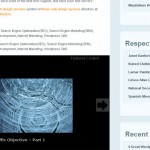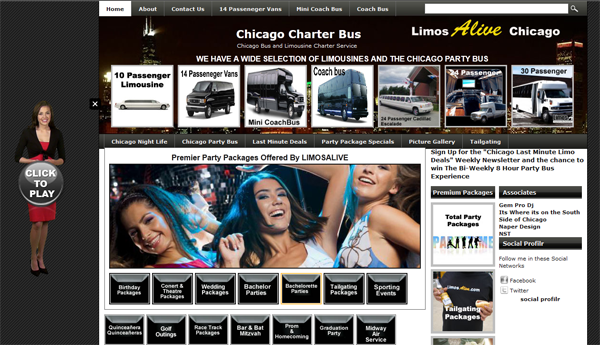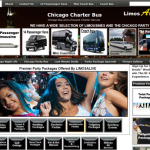 Dating, in general, kind of sucks. Or at least that’s always been my impression. Unfortunately, unless you want to die alone in your gorgeous Troy, NY apartment under a mountain of cats who do nothing but leach off you and prevent you from sleeping a solid eight hours, at some point you have to get in the game. And that means going on the elusive first date. The first date is when you get to know someone. It’s when you get to observe their behavioral cues to determine whether you’d be a good match. It’s when you watch how he butters his bread and wonder if he’d be gentler with a baby. [Don’t tell me you’ve never done that, ladies.]
Dating, in general, kind of sucks. Or at least that’s always been my impression. Unfortunately, unless you want to die alone in your gorgeous Troy, NY apartment under a mountain of cats who do nothing but leach off you and prevent you from sleeping a solid eight hours, at some point you have to get in the game. And that means going on the elusive first date. The first date is when you get to know someone. It’s when you get to observe their behavioral cues to determine whether you’d be a good match. It’s when you watch how he butters his bread and wonder if he’d be gentler with a baby. [Don’t tell me you’ve never done that, ladies.]
As wacky as it may sound, people are judging the homepage of your Web site in the very same manner that they’re judging their date. And they’re asking themselves the very same set of questions.
Questions like:
Are we on the same page?
During a romantic encounter, you want to make sure you both have the same goals, want the same things, and that you’re not looking for a first kiss while he’s trying to get you back to his place with as little effort as possible. And when you’re a searcher, it’s the exact same scenario, minus the creepy porn music, of course.
Someone conducted a search and was woo’d back to your place by a compelling Title tag and Meta Description. In a perfect world, you’d direct them to a properly optimized landing page, but if you’re not, then you need still need to make sure your homepage ‘matches’ their search. There needs to be some cue that, “yes, you searched for [delicious vanilla cupcakes] and here are all of our delicious vanilla cupcakes”. Because if you create disconnect between what they WANT and SEARCHED FOR with what you’re offering and the language you’re using, they’re gone. In an instant and they’re not leaving a phone number. Your homepage should be designed to address the exact concerns customers are arriving with.
What are you about?
A first date is a reconnaissance mission. You arrive trying to corroborate everything Google told you find out as much as you can about this person, including their profession, what they do for fun, where they grew up, etc. You want to get a feel for what this person is all about to see if you’re a match. And it’s the same process when a customer lands on your site for the first time.
When someone hits your site for the first time, they’re taking everything in and trying to get a feel for who you are. Your homepage needs to lay the groundwork for the entire culture of your business. You want to use not only your words and language to convey a message, but images, social proofing, video, white space, etc. One glance of your page (which is probably all you’re getting) should tell people who you are and what audience your business is looking to attract.
Can I trust you?
 While you can’t create trust in one date, that doesn’t mean people aren’t looking for the cues. They’re looking to see how you talk about your friends, whether you’re rude to the waiter and if you’re checking out someone else while they’re telling you a story. And, again, it’s not much different here on the Web.
While you can’t create trust in one date, that doesn’t mean people aren’t looking for the cues. They’re looking to see how you talk about your friends, whether you’re rude to the waiter and if you’re checking out someone else while they’re telling you a story. And, again, it’s not much different here on the Web.
On the Web, trust rules all and your homepage should be the first step in creating it. It’s really important that you focus on hitting all the important site trust indicators so that customers know it’s safe to enter their credit card information on your site, that you’ll still be around tomorrow, and that you have experience in whatever it is you claim that you do. Investing in a professional Web design and displaying links to security information, About pages, etc, are all great ways to let people know you’re going to treat them well and not rob them of their life savings.
Are you literate?
Part of that ‘trust’ thing means ensuring that if my life was in danger, you’d be able to use the phone book to call the appropriate authorities. On your Web site, I want to know you can spell newsletter before I agree to sign up for yours. It’s the little things.
Do other people like you?
When you’re chatting with someone on a first date, you’re trying to gather up some social proof. Essentially, you want to know that this person has OTHER people in their lives. Like, friends. This, as you may know, is a good sign that the person you are out with is not, in fact, a raging psychopath that their own mother had to move thousands of miles to get away from them.
On the Web, we look for social proof to help us determine whether or not this is a company we want to be associated with. For example, if your homepage shows you actively talking to people on Twitter, displays that you have 8,000 Facebook fans and that you have tons of testimonials from happy customers, I feel a lot safer doing business with you. People are sheep. We like doing business with the same companies the rest of the flock is doing business with. Show me your flock.
Are you gonna make me work for it?
When you’re out with someone, you want to know it’s not going to become a hassle to KEEP going out with them. For example, can the other person hold an intelligent conversation or do shiny objects distract them? Are their cute quirks like loud chewing, rambling, inability to hold their alcohol, etc, going to stop being “cute” and start becoming “annoying” three months down the line?
On the Web version, people are looking at your site and trying to determine how difficult it’s going to be to navigate and get through it. Are they going to have a hard time finding the right product? Is the check out process five more steps than it needs to be? Are things laid out sensibly? If your site looks like it’s going to be high maintenance, customers are going to go find a site that isn’t. We don’t have that much time to wait on BS these days. Yeah, boys, I’m talking to you.
Will you tell me what to do next?
The end of a first date is always a little awkward. Do you shake hands? Hug? Go in for the kiss? And what do you do once you figure that part out? Who’s going to call who? Should I just sit around and wait? Should I just say screw it and get the third cat now? For me, the sign of a successful first date ends with a plan for the next one. Some sort of follow up that lets me know, hey, this worked, next we should do X. Without it, I’m stuck on my couch wondering what just happened and waiting for the ice cream to thaw.
Once I’m on your homepage, you need to give me a road map for how I’m supposed to get off and get on with my life. Yes, I came to you looking for cupcakes and you seem to sell them, but now what? What’s next in the conversion path? A successful homepage will lay the groundwork for the rest of my site interaction. Without it, I’m fumbling in the dark. I don’t like to fumble.
Those are some ways I think homepage and dating interactions tend to mirror one another. Any others you can think of?
 Well, so what do they want? Too often business owners and marketers will be so concerned with our desires for immediate gratification, that we forget the most important part of the user experience is to first know what the user wants to begin with. The User’s wishes have to be fulfilled, and this can only be done by understanding what their actual wants are.
Well, so what do they want? Too often business owners and marketers will be so concerned with our desires for immediate gratification, that we forget the most important part of the user experience is to first know what the user wants to begin with. The User’s wishes have to be fulfilled, and this can only be done by understanding what their actual wants are.
 In the end, the most likely reason a user will be at your site is the content they are searching for. Ensuring that you have the right content for your target market is always the starting point of a strong User Experience Web Design and Development strategy.
A futuristic idea is to eventually engage with more than just dynamic content. Some sites and developers are trying to design and develop with predictively created content in mind. No, this isn’t a reference to retrieving content predictively for an individual, but to aggregated and create content customized for that individual, based on their wishes. Many apps and sites are trying this now, but are still locked in predisposed rules, there is some traction to developing a truly customized experience with completely original and created content based solely on the user’s desires. The option of AI responsiveness is also worth mentioning since it would be the logical step forward in producing a truly responsive development. How long something like that will take to get here is only limited to our motivation to bring it.
In the end, the most likely reason a user will be at your site is the content they are searching for. Ensuring that you have the right content for your target market is always the starting point of a strong User Experience Web Design and Development strategy.
A futuristic idea is to eventually engage with more than just dynamic content. Some sites and developers are trying to design and develop with predictively created content in mind. No, this isn’t a reference to retrieving content predictively for an individual, but to aggregated and create content customized for that individual, based on their wishes. Many apps and sites are trying this now, but are still locked in predisposed rules, there is some traction to developing a truly customized experience with completely original and created content based solely on the user’s desires. The option of AI responsiveness is also worth mentioning since it would be the logical step forward in producing a truly responsive development. How long something like that will take to get here is only limited to our motivation to bring it.






 Dating, in general, kind of sucks. Or at least that’s always been my impression. Unfortunately, unless you want to die alone in your gorgeous Troy, NY apartment under a mountain of cats who do nothing but leach off you and prevent you from sleeping a solid eight hours, at some point you have to get in the game. And that means going on the elusive first date. The first date is when you get to know someone. It’s when you get to observe their behavioral cues to determine whether you’d be a good match. It’s when you watch how he butters his bread and wonder if he’d be gentler with a baby. [Don’t tell me you’ve never done that, ladies.]
Dating, in general, kind of sucks. Or at least that’s always been my impression. Unfortunately, unless you want to die alone in your gorgeous Troy, NY apartment under a mountain of cats who do nothing but leach off you and prevent you from sleeping a solid eight hours, at some point you have to get in the game. And that means going on the elusive first date. The first date is when you get to know someone. It’s when you get to observe their behavioral cues to determine whether you’d be a good match. It’s when you watch how he butters his bread and wonder if he’d be gentler with a baby. [Don’t tell me you’ve never done that, ladies.] While you can’t create trust in one date, that doesn’t mean people aren’t looking for the cues. They’re looking to see how you talk about your friends, whether you’re rude to the waiter and if you’re checking out someone else while they’re telling you a story. And, again, it’s not much different here on the Web.
While you can’t create trust in one date, that doesn’t mean people aren’t looking for the cues. They’re looking to see how you talk about your friends, whether you’re rude to the waiter and if you’re checking out someone else while they’re telling you a story. And, again, it’s not much different here on the Web. Here are some factors that are often overlooked but are by no means unimportant and should be taken very seriously.
Here are some factors that are often overlooked but are by no means unimportant and should be taken very seriously.

 Leaders have more power than they realize. They can patiently create a climate of creativity or they can crush it in a series of subtle comments and gestures. Their actions send powerful signals. Their responses to suggestions and ideas are deciphered by staff as encouragement or rejection. If you want to crush creativity in your organization and eliminate all the unnecessary bother of innovation then here are ten steps that are guaranteed to succeed.
Leaders have more power than they realize. They can patiently create a climate of creativity or they can crush it in a series of subtle comments and gestures. Their actions send powerful signals. Their responses to suggestions and ideas are deciphered by staff as encouragement or rejection. If you want to crush creativity in your organization and eliminate all the unnecessary bother of innovation then here are ten steps that are guaranteed to succeed.



